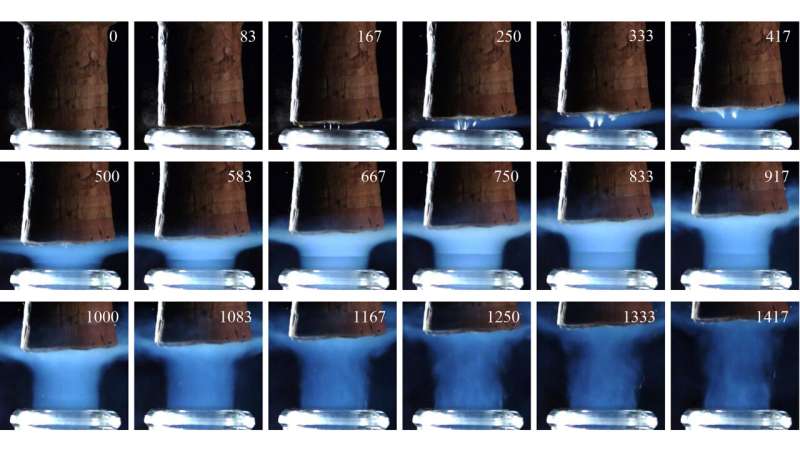
The beginning of a celebration is marked by opening a bottle of champagne. After the fun pop of the cork, there is a burst of bubbles in the air and a pleasant tingle on the tongue.
Researchers in France and India say there is more to pop than meets the eye. Computational fluid dynamics simulations show the formation and evolution of shock wave patterns as the carbon dioxide mixture shoots through the bottleneck after cork popping.
The findings could provide insight into the behavior of supersonic flow in a wide range of applications. Experimental research showed for the first time the formation of shock waves during cork popping.
"We wanted to better understand the phenomenon of a supersonic flow that takes place during champagne bottle uncorking," said co-author Robert Georges. "We hope our simulations will offer some interesting leads to researchers, and they might consider the typical bottle of champagne as a mini-laboratory."
In the initial uncorking phase, the gas mixture is partially blocked by the cork, preventing the champagne from reaching the speed of sound. The gas mixture escapes at supersonic speed, balancing its pressure through a succession of normal and oblique shock waves.
The waves combine to form shock diamonds. The bottle symmetry leads to a supersonic expansion. At the cork's edge, the pressure becomes too low to maintain an appropriate nozzle pressure ratio.
Gérard Liger-Belair, co-author of the paper, said that the paper shows the flow patterns hidden under our noses when we uncork a bottle of champagne. "Who could have imagined the complex and aesthetic phenomena hidden behind such a common situation?"
The researchers plan to explore other parameters, such as temperature, volume, and bottleneck diameter, along with the processes that accompany champagne bottle uncorking. They are interested in how ice particle formation affects supersonic flow when the temperature drops.
More information: Abdessamad Benidar et al, Computational Fluid Dynamic simulation of the supersonic CO2 flow during champagne cork popping, Physics of Fluids (2022). DOI: 10.1063/5.0089774 Journal information: Physics of Fluids